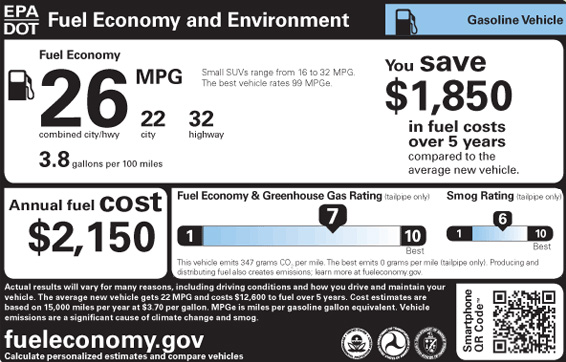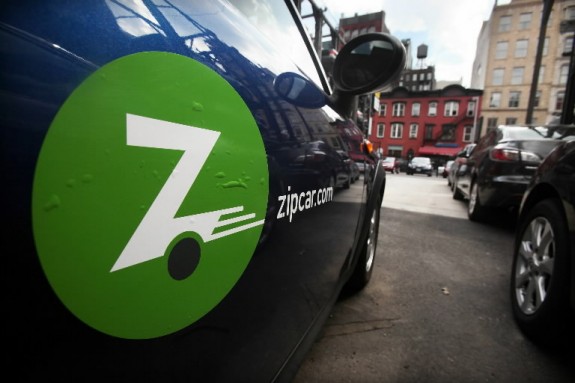Caveat Emptor: Vetting MPG claims

When BMW got caught, nobody thought anything of it. When Hyundai was nailed, people really snapped to attention, mostly because it was on a much larger scale. Now, Ford is facing the same issue: all three manufacturers have been or are being investigated by the EPA for inflated fuel economy claims. The core of the problem is that the EPA’s National Vehicle Fuel Economy Laboratory is underfunded. Low resources means that only 10-15% of fuel economy claims are rated or checked by the EPA itself. The other 85-90% of vehicle fuel economy ratings are provided by the manufacturer on an honor system. But lab testing is a touchy subject – even small variations can lead to huge discrepancies. Hyundai claims a small difference in their test procedure caused their issues, but BMW has stuck by their numbers and will likely appeal for the 2014 model year (laws do not allow them to protest the ruling for the 2013 model). So how can consumers assure themselves that they are going to get the mileage they expect?
Drive the cars
When you’re test driving cars, realize that the on-board trip computers may not be accurate. My truck’s trip computer routinely reports figures that are 4MPG too optimistic – that’s 20% greater than reality. So don’t believe the trip computer during a dealer test drive. Instead, look for rental cars that you might be able to try out for a weekend. Rental fleets are very diverse in most metropolitan areas. You can rent BMW’s from ZipCar, or more plebian Hyundai/Toyota/Nissan’s from Avis/Hertz. I’ve even seen Volvo’s and Lincoln’s at Hertz. Chances are, the car you want can be had for a weekend audition (though we recommend you rent them during the week, so you can use them on your commute).
To get an accurate read on fuel economy, just follow these steps. If your rental’s tank is full, drive around to waste a gallon or two, then drive up to a gas pump where the car sits on level ground. Fill it up until the pump clicks, and not a drop more. Take note of the odometer reading on the car before leaving the pump. Then, simply drive around for at least a couple hundred miles, and fill it up with fuel (again on level ground until the pump clicks). Take note of how many gallons is required and how many miles you drove (hint: use your current odometer reading and the reading from earlier). Your fuel economy is the number of miles you drove (hopefully, 200 or more), divided by the number of gallons you put in (hopefully, 6 gallons or less). It’s that simple!
Ask around
Unless you’re a hermit, you’re not the only person you know who wants a new car. Someone in your family or group of friends probably already bought some of the cars you’re considering, so ask them what mileage they get. If not, there are always online resources such as Fuelly or model-specific forums. The nice thing about forums is that you get to interact with people. The numbers that members post, those aren’t dead numbers – you can ask what conditions those were in, how they drive, whether they use cruise control, if they had the AC on, etc. And, many of these car fanatics have no problem keeping track of their mileage for you under special conditions (ie. on a long road trip).
Comparison shop
The biggest mistake most people make is to compare only EPA ratings when looking at fuel economy. That means most consumers are shopping for a large purchase with one eye closed. A site like Fuelly would allow you to comparison shop, but a better method would be to look at magazine reviews. Publications like Car & Driver and Motor Trend have individual reviews, frequent comparison tests, and long-term tests. As an example, in the February 2012 edition of Motor Trend, there is a comparison test of small hatchbacks. While the Hyundai Veloster got the best EPA ratings at 28/40 (now revised), it got a measely 27.6MPG in Motor Trend’s hand calculations. Meanwhile, the Mini Cooper was rated at 29/37, but got 33.0MPG in real life – almost 20% better than the Hyundai. Note that reviews and comparisons in the magazines tend to be done at a fast pace, with their foot to the floor. The real life MPG in these tests, while accurate, is more indicative of city type driving. The long-term reviews would be a better metric for long-distance highway mileage. This type of comparison shopping is quick, easy, and my favorite way of doing hands-off yet accurate research.
Be skeptical
This is probably the best tool that you can use during your shopping. If it sounds too good to be true, you owe it to yourself to at least investigate. Sure, the Honda Odyssey is rated at 28MPG highway – but that’s in an EPA test, running at a speed that nobody can stand to drive at. At 75MPH, that figure might be much lower. Or in the case of Ford, their C-Max Hybrid has a much bigger frontal area to push through the air, but it gets the same highway fuel economy as the smaller Fusion Hybrid. Both vehicles use the same drivetrain, so how is that possible? The EPA investigation will reveal in time!
Hopefully, this post will give you a better understanding of how to look for bogus mileage claims. While the actual numbers won’t matter too much in the long run (Hyundai estimates the average owner will be reimbursed $88/year to account for higher fuel consumption), it still feels better to know what you’re getting and not be unpleasantly surprised.


